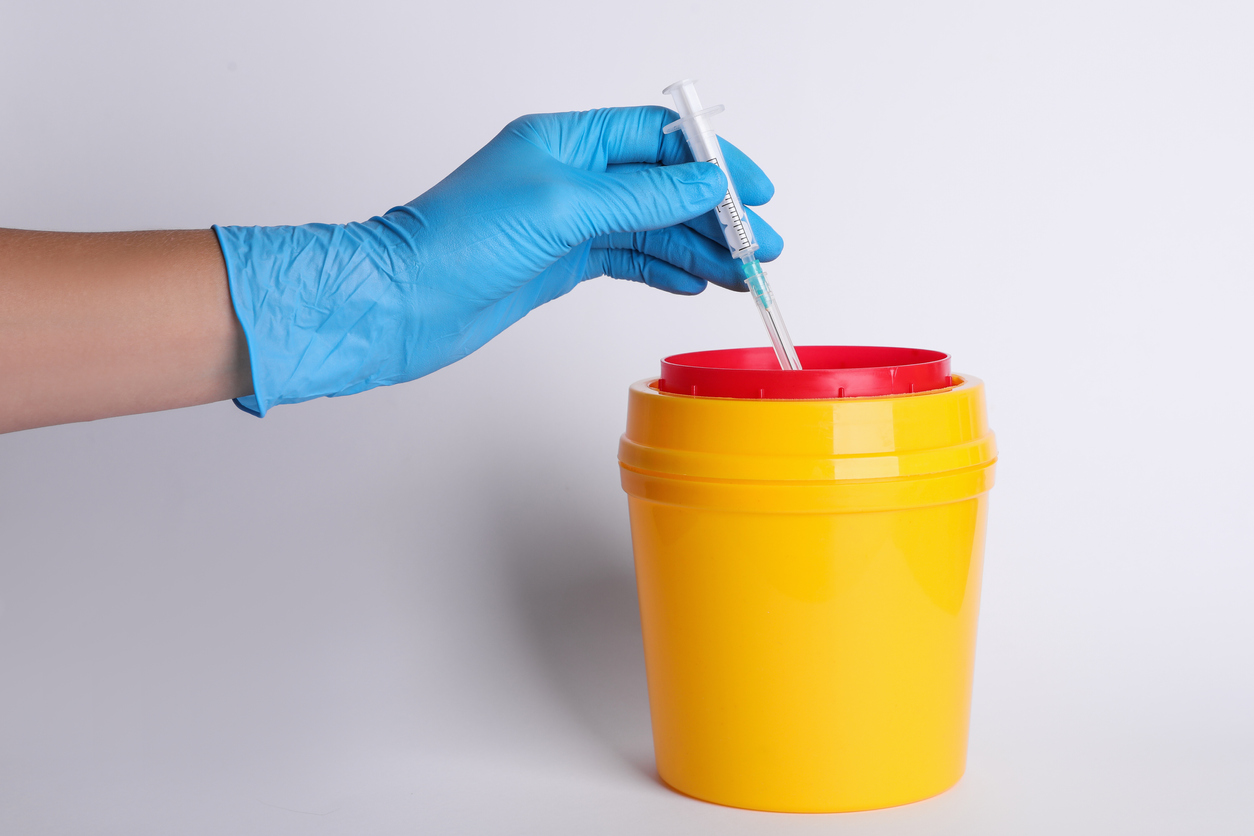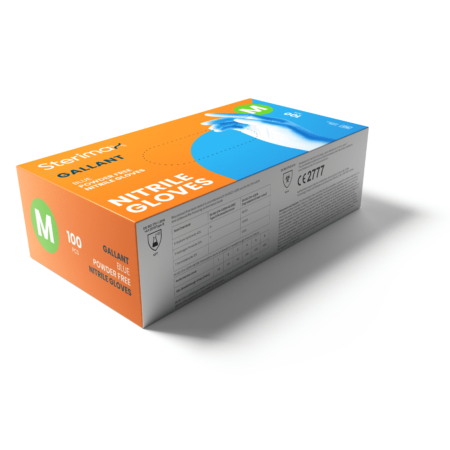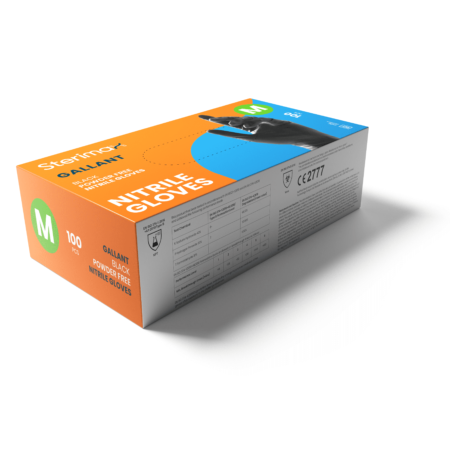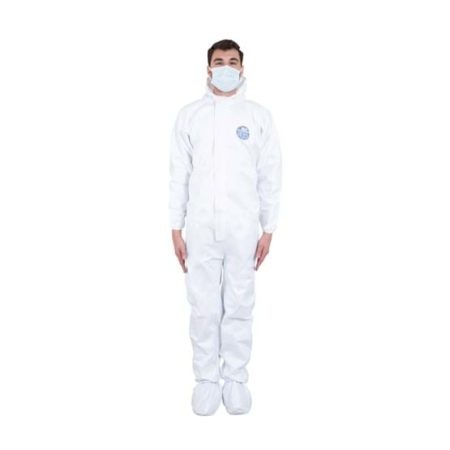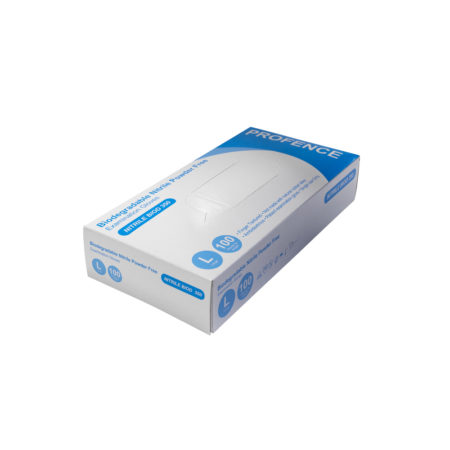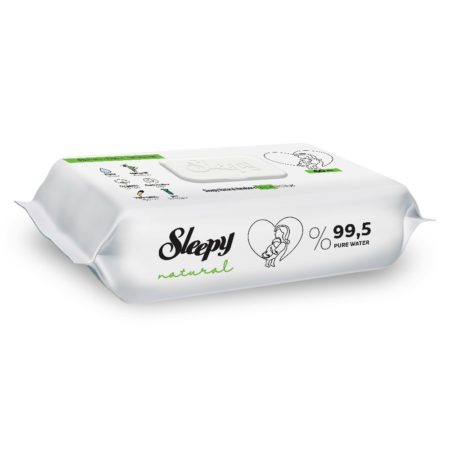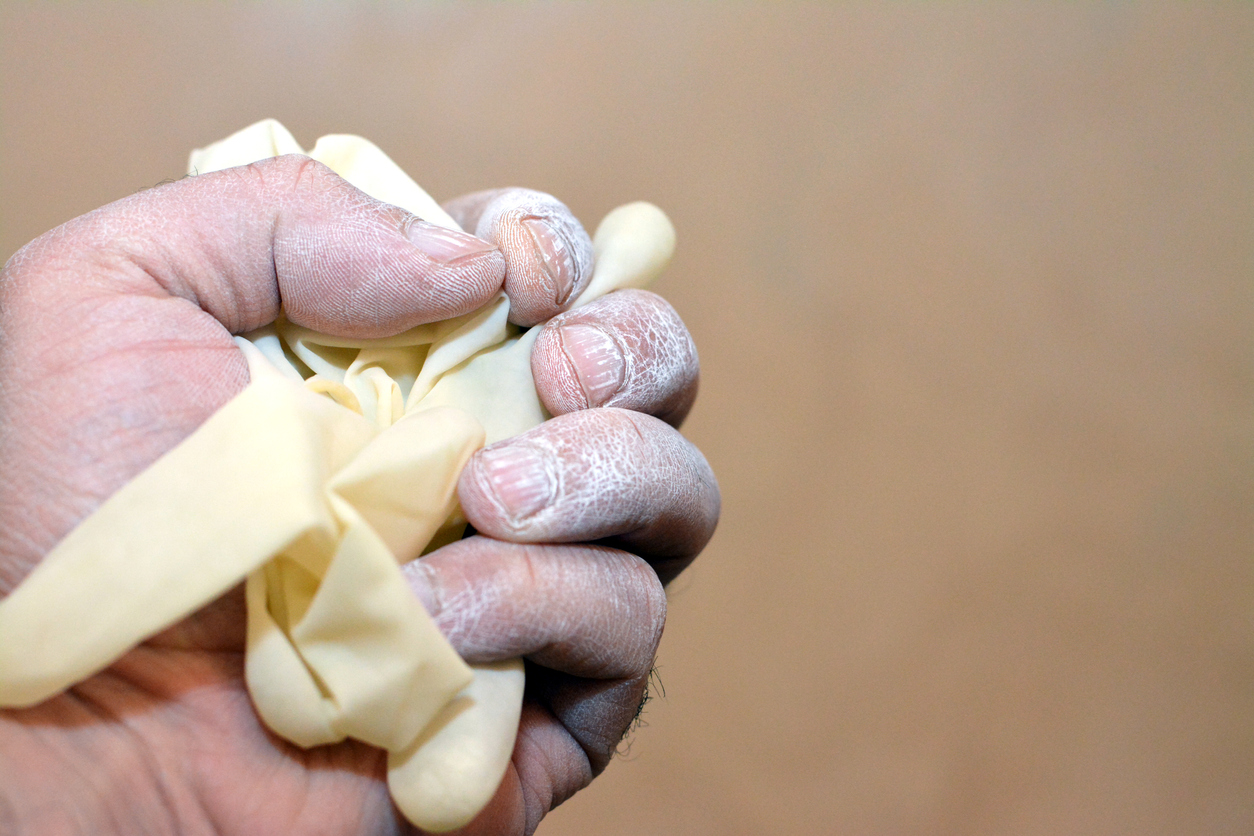Disposable gloves prevent the spread of germs and shield hands from hazardous materials, but for some, they cause allergic reactions ranging from annoying to life-threatening.
Latex proteins, chemical residues, and sweat buildup are the commonest culprits behind glove-induced rashes and blisters. Identifying them is vital to ensuring you supply the right gloves to workers.
Latex allergies
A latex allergy develops when the body’s immune system overreacts to proteins found in latex. The immune system treats these proteins as harmful invaders and releases chemicals like histamine to defend against them.
Latex gloves have natural rubber proteins that provoke allergic reactions, including redness, swelling, and itching. Latex particles can also enter the air and trigger systemic reactions like wheezing, coughing, and anaphylactic shock.
To reduce latex allergen levels, manufacturers leach excess proteins and produce low-protein options, but the only way to prevent latex reactions is to avoid latex entirely.
Synthetic alternatives like nitrile, vinyl, and neoprene carry less allergy risk than latex. Still, they are not always harmless.
Latex allergies can develop suddenly after frequent latex exposure, such as when healthcare workers use latex gloves. People with spina bifida, food allergies, or hand eczema also have higher latex allergy risk.
Powder allergies and irritation
Powders like cornstarch make putting on and taking off disposable gloves easier but also carry skin and respiratory irritation risks.
Cornstarch absorbs natural moisture from the hands, causing dryness, cracking, and contact dermatitis, especially along knuckles and fingertips.
Even small amounts of powder can prompt reactions in sensitised wearers. Using powder-free gloves reduces airborne and skin exposures. Wear glove liners underneath if powdered options are unavoidable to create a protective barrier.
Chemical irritants used in glove manufacturing
While latex allergies get much attention, chemical residues in synthetic disposable gloves can also lead to skin irritation and contact dermatitis.
Nitrile and neoprene gloves are made using polymerisation, in which chemical accelerators are added to speed up production. Even after manufacturing, trace amounts of these chemicals can remain embedded in the gloves.
Direct skin contact with residual accelerators can cause redness, blisters, swelling, and itching for sensitive individuals.
Choose nitrile and neoprene gloves labelled as “accelerator-free” to reduce the risk of contact dermatitis. Glove liners worn underneath provide an additional skin barrier and absorbent layer to prevent chemical exposure.
Moisture buildup and friction reactions
Not all reactions from disposable gloves are allergies. Some are from the rubbing and friction around the fingers and knuckles, with this contact dermatitis producing red, cracked, itchy hands – sometimes misdiagnosed as eczema or ringworm.
You can reduce moisture by switching to looser-fitting gloves and wearing glove liners – this combination solves the problem in most cases.
Find out more
Disposable gloves protect our hands but aren’t without the risk of allergies. Being aware of potential reactions allows appropriate selections and practices to avoid discomfort. Contact us anytime for advice if you need additional guidance.




